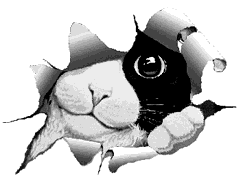
RUSSIAN BLUE
ORIGIN
Little is known about the origin of the Russian Blue, however, stories and legends abound. Many believe the Russian Blue is a natural breed originating from the Archangel Isles in northern Russia. Legend has these beautiful animals trapped for their plush double coats which are sometimes compared to the coat of a beaver or seal. Originally known as the Archangel Cat or Foreign Blue, it is believed that they were brought by sailors from the Archangel Isles to England and Northern Europe in the 1860s. Rumor also has the Russian Blue as a descendant of the Royal Cat of the Russian Czars and as a favored pet of Queen Victoria. First shown in 1875 at the Crystal Palace in England as the Archangel Cat, the original Russian Blue competed in a class for all blue cats. It was not until 1912 that the Russian Blue was given a class of its own. From its early origins until after World War II, English and Scandinavian breeders worked to develop the foundation bloodlines for the contemporary Russian Blue. Although Russians were imported to the United States as early as 1900, there is little recorded work with the breed in America until after World War II. American breeders combined the English bloodlines with their plush, silvery coats and Scandinavian bloodlines with their emerald green eyes and flat profiles to produce the Russian Blue we know today. In the 1960s the Russian Blue began to gain popularity and has become a favorite both at cat shows and at home.
ASPECT
One of the most outstanding features of the Russian Blue is a short, dense coat of an even, bright blue color with each hair dipped in silver. This silver tipping gives the Russian a silvery sheen and lustrous appearance that can best be appreciated in natural light. Russian Blues come in only one color, blue, and one coat length, short. The density of the coat causes it to stand out from the body and allows patterns to be traced in the coat which remain until you smooth them away. In lovely contrast to the blue coat, the Russian Blue has large, rounded, wide-set eyes that are a vivid green. The head is sometimes described as cobra-like which aptly describes the broad, medium wedge and flat profiles. The large, pointed ears are wide at the base and set rakishly toward the side of the head. The body of the Russian Blue is fine-boned, long, and firmly muscled. The clean lines and graceful carriage of the Russian Blue give it a regal appearance all its own.
CHARACTER
Russian Blues are quiet, clean cats who are playful and loving companions. Despite their shy nature, Russians are devoted and quite affectionate towards their loved ones. They are very intelligent and have been reported to open doors and teach their owners to fetch. Sensitive to the mood of the house, Russians will ‘clown' to quiet a crying baby or sit patting your face to chase away the blues. They get along well with children and other pets.
CARE
The Russian requires a minimum of grooming with periodic nail clipping and a coat that can be kept looking good by frequent petting and an occasional combing. Many Russians seem to enjoy being combed or brushed as it allows them additional time with their owners.